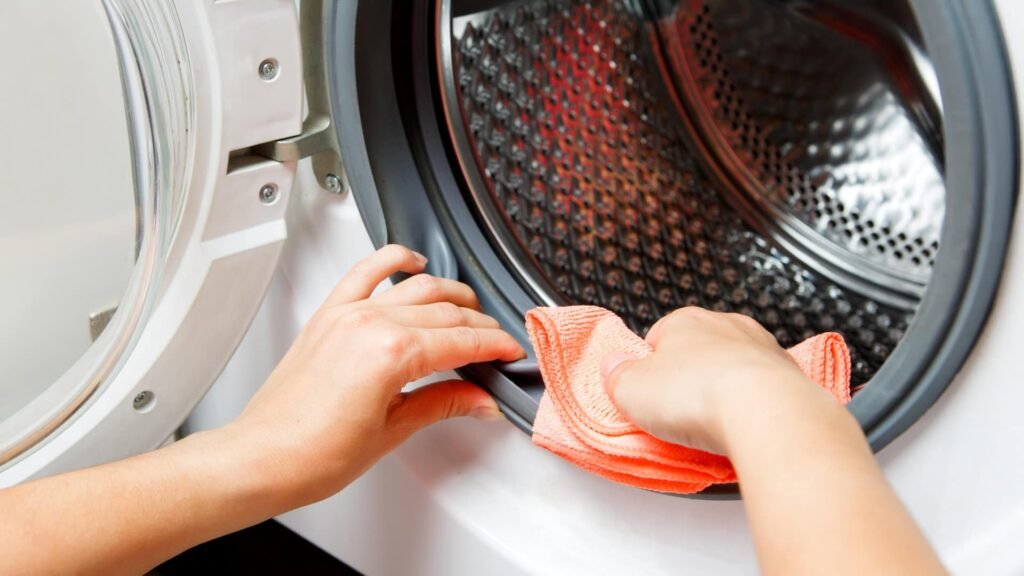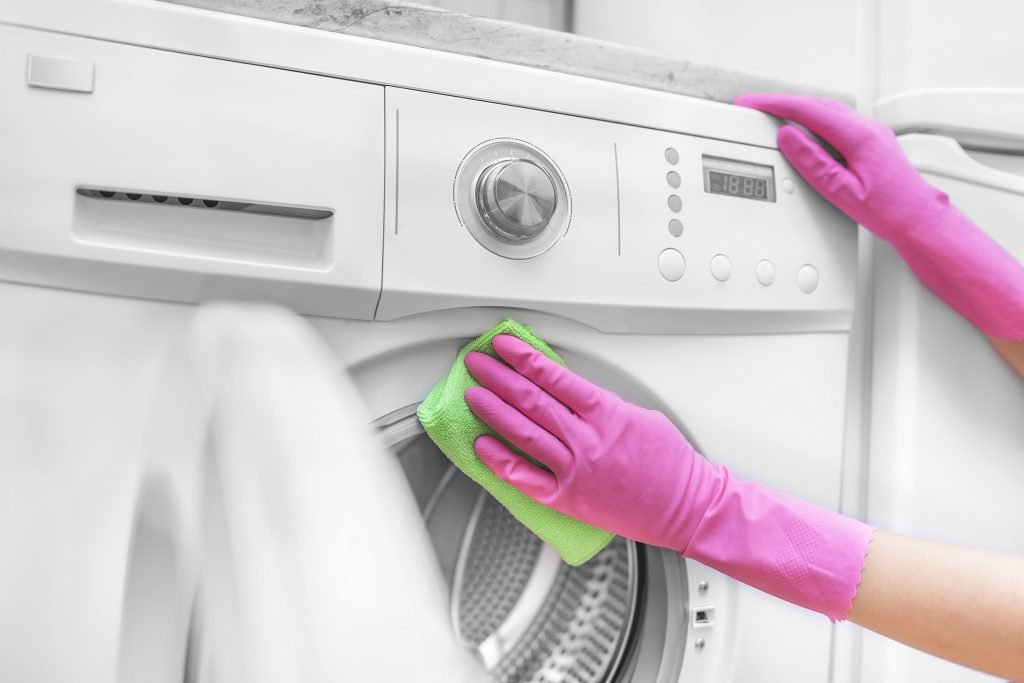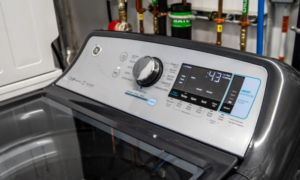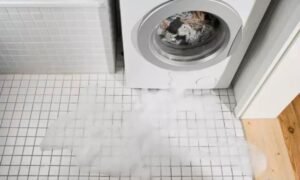Last updated on June 27th, 2023 at 04:01 am
For your washing machine to function well and last a long time, it must be kept clean. Dirt, mineral deposits, and detergent residue can accumulate over time in the machine, decreasing both its performance and the standard of your washing. Regular cleaning ensures that your garments come out fresh and clean while also enhancing their performance and getting rid of smells. In this post, we’ll show you exactly how to clean a washing machine so you can improve its efficiency and increase its longevity.
The Importance of Washing Machine Cleaning

Photo Credit:
There are various reasons why it’s crucial to clean your washing machine. Here are some of the main justifications why routine cleaning is required:
Better Performance
Detergent residue, fabric fibers, and mineral deposits can build up over time in the filters, detergent dispenser, and other components of your washing machine, including the drum. Reductions in performance and efficiency may result from this accumulation. These deposits may be eliminated with regular cleaning, ensuring that your equipment runs at its best.
Odor prevention
Mold, mildew, and bacteria can grow in a filthy washing machine, which can result in the development of unpleasant aromas. Your clothing may pick up these scents and no longer smell as fresh. These scents are removed by cleaning your machine, leaving your clothes feeling fresh and inviting.
Longer Lifespan
Your washing machine’s lifespan may be increased with routine maintenance and cleaning. The pump, motor, and seals might experience needless wear and tear when dirt and debris build up inside the machine. Cleaning keeps your equipment working smoothly for longer by preventing the buildup of harmful elements.
Hygiene and health
Contaminated washing machines can hold allergies, pathogens, and dangerous germs. These germs can spread to your clothing and perhaps cause skin rashes, allergies, or even infections. By removing these impurities from your machine, you may improve hygiene and produce cleaner laundry.
Energy Efficient Operation
A clean washing machine runs more effectively, which can help cut down on energy usage. When the machine is clean and clear of buildup and debris, it can circulate water more effectively, utilize detergent more effectively, and spin clothing more effectively. This has a positive influence on the environment and lowers energy costs.
Preventing Stains
If your washing machine is not thoroughly cleaned, dirt, fabric softener residue, and detergent residue can assemble in the drum and on the seals. Your garments could pick up stains or other damage from this residue when it transfers to them. These stains may be avoided with routine cleaning, keeping your clothing in excellent shape.
Follow the manufacturer’s directions while cleaning your washing machine. Typically, it entails using a cleaning agent or vinegar and baking soda solution during an empty cycle. Additionally, it’s crucial to maintain the machine’s exterior clean and routinely wash off the drum, door seals, and detergent dispenser.
You may get greater performance, cleaner clothes, and a longer equipment lifespan by periodically cleaning your washing machine.
A Step-by-Step Guide to Washing Machine Cleaning

Photo Credit: stayathomemum
An instruction manual for cleaning your washing machine is provided below:
Read the Manual
For detailed directions on cleaning your particular washing machine model, start by reviewing the manufacturer’s manual. It could offer helpful details and any cleaning advice that is specific.
Collect Materials
Collect the cleaning tools and materials, which commonly include baking soda, white vinegar, a microfiber cloth or sponge, and a toothbrush or tiny scrub brush.
Empty the Machine
Before beginning the cleaning procedure, make sure that your washing machine is entirely empty of any clothing or other laundry.
Clean the Detergent Dispenser
If at all feasible, take the detergent dispenser out of the washer and give it a good wash in warm, soapy water. Remove any tenacious residue by brushing it away with a toothbrush or tiny brush. Before putting it back into the machine, give it a good rinse and let it to air dry.
Clean the Drum
You have a few different options for cleaning the drum, including:
– Vinegar Approach: Pour one or two cups of white vinegar into the detergent dispenser or the drum itself. Turn on the hot water without doing any washing. Mineral stains and detergent residue will be easier to dissolve with the vinegar.
– Baking Soda Method: Fill the drum with roughly half a cup of baking soda. Turn on the hot water without doing any washing. Baking soda assists in cleaning off filth and removing smells.
– Combination Method: You may combine vinegar and baking soda for a more thorough cleaning. One cup of vinegar should be added to the drum or detergent dispenser to begin. Bring the water to a boil. After it is finished, add half a cup of baking soda to the drum and start a second hot water cycle.
Wipe the Seals and external
Use a moist microfiber cloth or sponge to wipe the rubber door seals, the machine’s external surfaces, and any control panels while the cleaning cycle is going. Pay close attention to any cracks or challenges to access regions. When you’re finished, wipe the surfaces dry with a fresh cloth.
Clean the Filter
Look for debris or lint filter in your washing machine. To find it, see the handbook because it differs by model. Remove the filter, clean it with a toothbrush if required, and rinse it under running water to get rid of any lint or dirt. Prior to reinstalling it, let it fully dry.
Regular Maintenance
Establish a schedule to keep your washing machine clean and well-maintained. To get rid of any detergent or fabric softener residue, wipe clean the drum, door seals, and detergent dispenser after each cycle of laundry. Keep the door slightly ajar between usage to let air flow and stop the spread of mold.
Always remember to adhere to the manufacturer’s detailed instructions since certain washing machines may need different cleaning procedures. Your washing machine will work at its best, last longer, and produce clean, fresh clothes if you regularly clean it.
Washing Machine Maintenance Advice

Photo Credit: pacificagroup
Here are some cleaning and maintenance suggestions for your washing machine:
Regular Cleaning
To avoid the accumulation of dirt, soap residue, and grime, maintain a regular cleaning schedule. For thorough cleaning instructions for your washing machine, go to the preceding section.
Leave the Door Open
To allow air to flow and dry out the interior, leave the washing machine door slightly ajar after each usage. This aids in limiting the development of mold and mildew.
Keep the detergent drawer clean by frequently taking it out and giving it a warm water rinse to get rid of any lingering residue. Scrub away tough deposits with a toothbrush or tiny brush. Before placing it back into the machine, fully dry it.
Quickly Remove Wet items
Avoid letting damp items linger in the washer for a lengthy amount of time. In order to avoid musty smells and bacterial development, remove them right away when the cycle is over.
Use the Right Detergent
For your washing, use the right quantity of premium detergent. Avoid using too much detergent since it might leave residue on your clothing and in the washing machine.
Clean the Lint Filter
Frequently inspect the lint filter and take out any built-up lint or debris. This keeps the water flowing smoothly and avoids obstructions.
Inspect Hoses and Connections
Routinely look for any indications of leaks, fractures, or damage in the hoses and connections. To avoid water damage and guarantee correct operation, replace any damaged or worn-out hoses or connectors.
Distribute the Load Equally
An overloaded washing machine might strain the motor and impair its effectiveness. Distribute the clothing evenly inside the drum and adhere to the load capacity instructions stated by the manufacturer.
Use Hot Water Cycles
Run sporadic hot water cycles without any laundry to aid in bacterial eradication and the dissolution of residue. This is especially helpful if you usually wash your clothes in cold water.
Take into account water softening
If you reside in a region with hard water, mineral deposits may amass in your machine more quickly. To lower the mineral content and minimize accumulation, think about utilizing a water softener or adding a water softening agent.
You can maintain your washing machine in top shape, assure peak performance, and extend its lifespan according to these maintenance suggestions. Laundry will be cleaner and the appliance will operate more effectively with regular maintenance and cleaning.
Conclusion
For maximum performance and lifespan, your washing machine must be cleaned often. This step-by-step manual will help you thoroughly clean your machine, avoiding buildup, getting rid of odors, and keeping it fresh. Don’t forget to plan your cleaning, use the right detergent, and leave the door open in between cycles. You may benefit from cleaner clothing and a washing machine that performs at its peak by including these maintenance ideas into your laundry regimen.
FAQS
1. How frequently should I clean my washer?
Depending on use and water hardness, it is advised to clean your washing machine at least once every 1-3 months. Maintaining performance and preventing buildup requires regular cleaning.
2. Can I clean my washing machine with bleach?
Yes, you can clean a washing machine with bleach. However, in order to prevent harming the machine or influencing following loads, it is crucial to follow the manufacturer’s recommendations and carefully dilute the bleach.
3. Is routine detergent dispenser cleaning required?
A: Yes, cleaning the detergent dispenser is necessary to guarantee appropriate soap distribution, avoid residue buildup, and both. To ensure maximum operation, routinely remove the dispenser’s parts and give them a thorough cleaning.
4. How can I get lingering smells out of my washing machine?
A: You can try mixing vinegar and baking soda to get rid of scents that just won’t go away. Use the solution in a hot water cycle or specific odor-removing washing machine cleaning chemicals.
5. When not in use, should I keep the washing machine door open?
It is advised to leave the washing machine door open in between cycles to promote airflow and prevent moisture buildup. This procedure aids in keeping the machine free of smells and mold development.
















